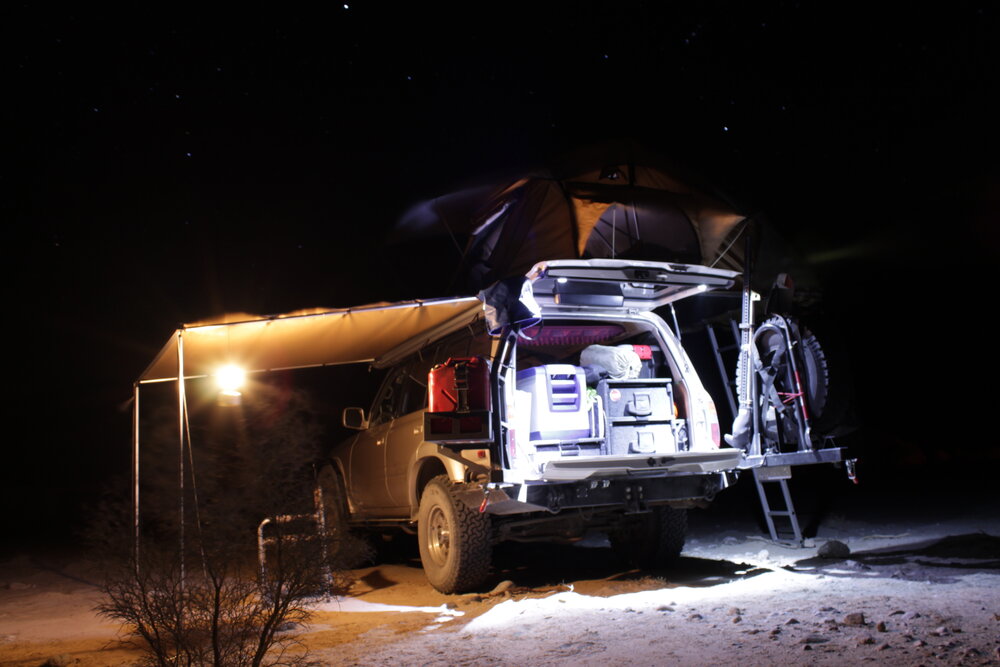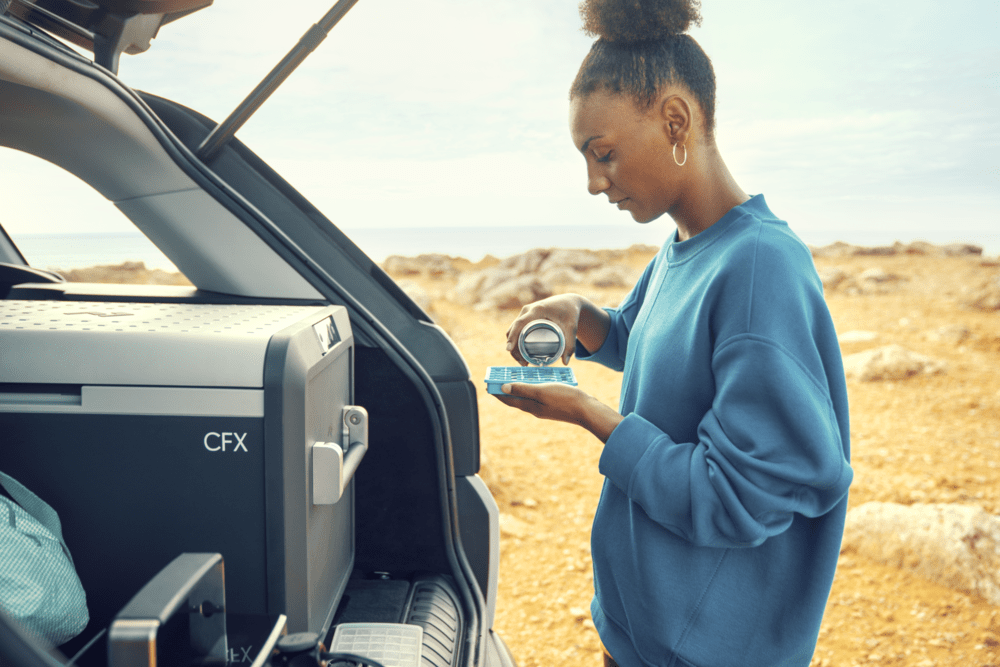DIPSTICKS & DIFFERENTIALS
DIPSTICKS & DIFFERENTIALS IS A BLOG HOSTED BY OVERLAND EXPO SALES DIRECTOR, ANTHONY SICOLA.
FOLLOW ANTHONY @OVERLANDNOMADS.

Unless you’re the type of grizzled, old-school camper content with heating a can of Pork & Beans on a campfire, gnawing on a piece of stale white bread, and drinking warm beer, you’ve probably considered a cooler or fridge for use in your travels. Way back in the Paleolithic era of overlanding, when it was simply called “camping,” a person really didn’t have the plethora of choices they have today. In fact, if you wanted to extend your trips in the backcountry, your only choice was a cooler. That’s it.
Coolers used to get a bad rap. A few decades ago, using a cooler as your sole food-preservation equipment meant soggy lunch meat, waterlogged veggies, and that plastic freezer bag full of bacon that somehow allowed water in — even though you zipped it entirely closed. Figuring out the correct amount of ice to keep everything cold used to require an advanced degree in physics. Inevitably, your frozen water would be gone by the second day and you’d be heading back to the store for more.
Read Next: Overland Expo’s Favorite Overlanding Fridges, Coolers, and Camp-Kitchen Accessories
Coolers have come a long way since those days. The ice tends to last longer and they are infinitely easier to clean now. Do I still use a cooler? Yes. I keep one stocked with ice for camp cocktails and for keeping my beer cold. It allows me to keep my perishable food in the fridge without taking up all the room with bottles and/or cans. Check out my review of the Pelican Elite Cooler that I took to Baja in December.
When my wife and I built out our 80 Series Land Cruiser in 2010, we knew we wanted to avoid dealing with finding ice. So, we installed a second battery. Word to the wise: Never run a 12-volt refrigerator off of your starter battery. If you do, you’re asking for a world of trouble and can potentially get stuck somewhere in the wilderness not being able to start your vehicle.
For our in-rig fridge, we went with an ARB 50 qt. Single Zone Fridge Freezer. At the time, it hit the delta of the least expensive and highest efficiency model we could find. The 50 qt model has an average DC power consumption of 0.7 to 2.3 amps per hour. At the maximum estimated power usage of 2.3 amps per hour, the fridge will use approximately 55.2 amps in a 24-hour period.

Photo credit: Anthony Sicola
Depending on your setup and whether you’re augmenting battery power with solar, you’ve just extended your ability to be out in the backcountry exponentially. As a side note, and for the sake of keeping this a cooler vs. fridge comparison, I’ve left out a mid-tier option which is the powered cooler. Powered coolers can usually cool 30º below ambient temperature, while a fridge can cool up to 90º below ambient temps. The fridge is by far the better choice here for any travel in hot climates.
One trip with our new fridge sealed the deal for us. We were converts and would never go back to a cooler in this lifetime. The 12v fridge literally changed the way we travel and allowed us access to cool, fresh veggies, cold meat storage, cold beer, and all of the cold condiments we want (we definitely have a condiment problem and we aren’t seeking help for it). We can fit at least five and up to nine days of fresh food into our fridge, the power consumption is low, and there’s an LED light in the fridge compartment making it much easier to find things in the dark.
One nice thing about most fridge/ freezers is that they can run off 12v and 110v, so if we happen to be in a place with accessible power, we can run the fridge off shore power instead of drawing on the battery.
The downsides of our fridge are that we have to stack our food in the main compartment, which makes it difficult to find things that migrate to the bottom on bumpy trails. Also cleaning can be a major chore. I can’t tell you how many times we’ve had food leak from going over rough terrain and we’ve had to remove everything in the fridge to clean it up.

Dometic’s Rapid Freeze Plate makes ice while the rest of the fridge maintains the pre-set temperature.
The final con is that our fridge is its single zone, meaning it can be used as a fridge or a freezer at any given time. Obviously the pros outweigh the cons here. I should also mention that our investment brought us ten years of use without any issues.
Buy quality if you do decide to make the leap to a 12v fridge. My dad used to say, “Buy once, cry once.”
Newer dual-zone fridges from most manufacturers allow you much more flexibility. You can use them as a fridge, a freezer, or a fridge and freezer at the same time. This is likely our next purchase because who doesn’t want ice cream in the middle of nowhere? If just having a bit of ice for a camp cocktail is your thing, Dometic recently solved that problem in the CFX3 55IM by introducing a “rapid freeze plate” that can make ice and keep your food and beverages cool simultaneously. Genius.
Along with all of those innovations, most fridge freezer models have some sort of Bluetooth or Wi-Fi compatibility that allows you to check and change the temperature and get diagnostics from an app. I mean, who wants to get up out of their camp chair after a long day on the trail just to check your fridge temps?
In the end, the choice of cooler vs. refrigerator in your overland rig is purely your personal preference. I know what side of the fence I’m on.
Header image credit: Anthony Sicola


